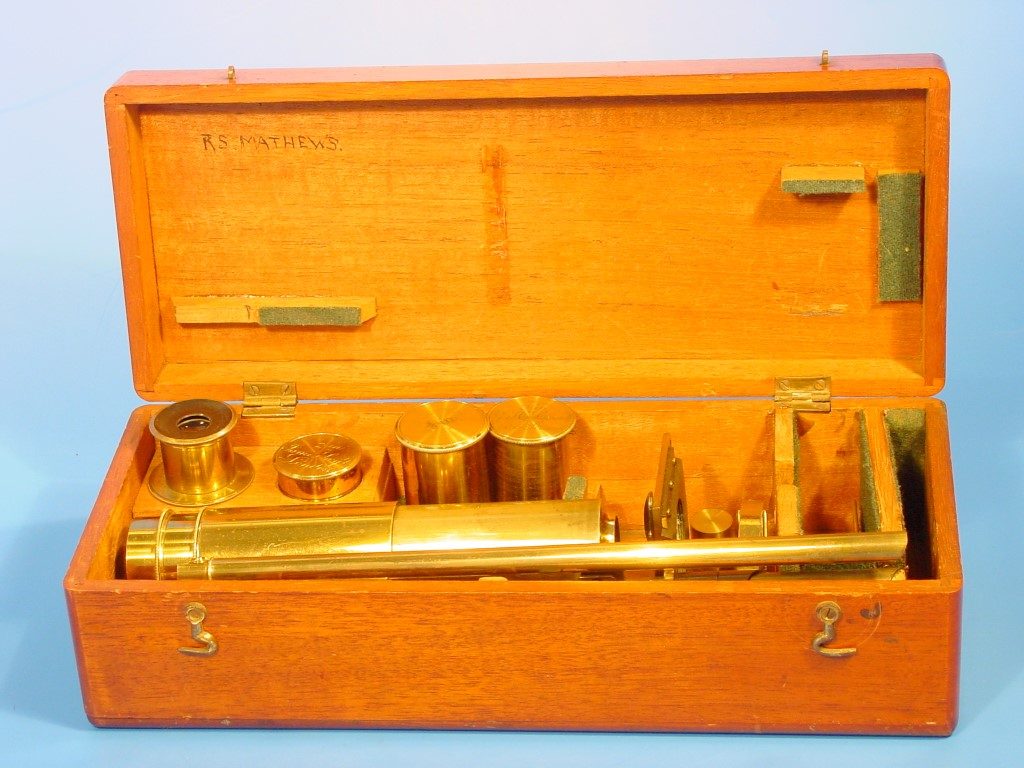
Year/Period |
1870-1890 |
Maker |
ONBEKEND/UNKNOWN |
Country |
United Kingdom |
Signature |
Unsigned |
Category |
Microscopes |
Optical 1 |
Compound |
Optical 2 |
Achromatic |
Size of the box (h x w x d) |
8 × 28.5 × 12 cm |
Size of the microscope (h x w x d) |
27 × 22.2 × 18 cm |
Inventory number |
SM 25 |
The microscope is kept in a wooden box with some green baize linings.
This travelling microscope is after a design by William Moginie, who worked for the firm of C. Baker. Coarse adjustment is by means of the body tube running in a collar. This collar is connected to one of the three rods forming the stand. Fine adjustment is by means of a micrometer screw in the rod to which the collar is connected. There are a flat and concave mirror adjustable in a bracket. There is a simple stage.
The microscope has a Huygenian eyepiece with a focal length of 41.1 mm and a magnification of 6.1×.
With this microscope are three objective lenses:
| Objective lenses | 1/5 dry | 1/5 wet | 1 inch | 2 inch |
| Focal length (mm) | 5.84 | 5.23 | 21.6 | 38.7 |
| Magnification | 190.6 | 214.7 | 41.8 | 21.9 |
| Numerical aperture | 0.81 | 0.88 | 0.2 | 0.09 |
| Resolving power (µm) | < 0.8 | < 0.8 | 1.75 | 3.75 |
The field of the ‘1/5’ objective lens is strongly curved, there is spherical overcorrection, the shape of the diffraction rings is irregular. When used with a 15× Huygenian eyepiece the diatom Pleurosigma angulatum is resolved into dots (‘dry’). Using water immersion (‘wet’) the lines of the diatom Surirella gemma are just not resolved.
The 1-inch objective lens shows a trace of astigmatism. The other objective lens is just good.
Accessories: a live box with spring rings.